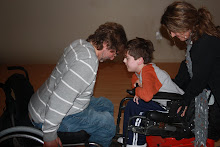Reposted from Yoga Tune Up® | Did You Know… Chaturanga Is Sanskrit For Shoulder-Shredder?
Okay, we all know it means four [limbed] staff pose, but given it’s propensity to contribute to the shredding of shoulder tendons, it has more than earned its nickname.
I personally know several practitioners who have undergone surgery to repair their tendons from too many Chaturangas done improperly. Often, it can be attributed to a lack of activation from a particular shoulder stabilizer.
In the photo above, you can clearly see the head of her humerus (top of the shoulder) pointing down. This is the classic mis-alignment that can lead to injury. First, she needs to keep her shoulder at elbow level and not go below as pictured. If she were to integrate a little bit of Cat pose here, pushing into the ground as she lowered, it would help pull her shoulder blades apart in PROTRACTION allowing the arm bone to maintain a more neutral and healthy position.
The Serratus: The MVP of shoulder stability is a gorgeous, multi-fingered muscle called the Serratus Anterior that starts at the inside edge of your shoulder blade, wraps its long fibers around your torso and grips your upper eight or nine ribs. In addition to keeping that inside edge of your blade firmly down on your back, it pulls the blades apart (protraction) and down (depression).
If it’s not working, your shoulder blades can start to peel off your back (winging) and the head of your arm bone careens forward in the socket, leaving little space for the tendons of your rotator cuff muscles. This can create a shearing force on those tendons and their bursa.
How do you know if it’s turned on? The shoulder blades are moving away from each other as they do in Cat pose for example. If the shoulder blades are moving together, Serratus Anterior is turned off and shoulder tendons are vulnerable during load bearing postures, like Chaturanga.
Usually, it’s a classic series of unhealthy movements: As people begin Chaturanga by bending their arms, their elbows start to drift away from the ribs, shoulder blades move toward each other and they crane their necks down, moving their heads lower than their torsos. Repeat 20-30 times per class, 3 classes per week. This is a hot mess.
To safe guard your shoulders and your practice, hug your elbows into your rib cage and push away from the floor as much as you can as your lower
Properly executed Chaturanga can give you deliciously strong, healthy and shapely shoulders. Save the shredding for bodybuilders and snowboarders.
Monday, January 2, 2012
Subscribe to:
Posts (Atom)

